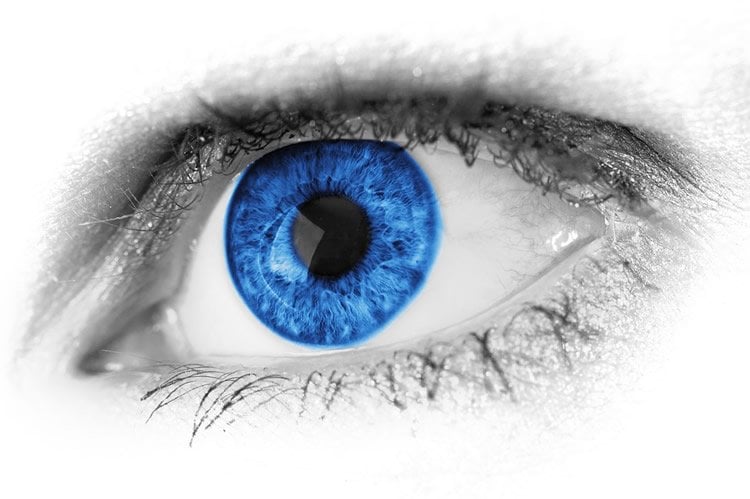Summary: Researchers, using eye tracking software, report what we look at helps guide our decisions when faced with two visible choices.
Source: Ohio State University.
Scientists using eye-tracking technology have found that what we look at helps guide our decisions when faced with two visible choices, such as snack food options.
But it is not as easy as saying we simply choose what we look at the most, the research found. Instead, our gaze amplifies our desire for choices we already like.
“We don’t necessarily choose something just because we look at it more, as some researchers have suggested. If we look at something we feel neutral about, our attention will have little effect,” said Ian Krajbich, co-author of the study and assistant professor of psychology and economics at The Ohio State University.
“But if we look at something we already like, our attention makes us like it even more in that moment.”
Say you’re looking at two candy bars in a vending machine. You like both of them, but prefer the one with peanut butter slightly more than the one with just chocolate. You’ll usually choose the one with peanut butter, but not always.
“We can use eye tracking to predict when people are going to go against their usual preference,” Krajbich said. “When someone spends more time looking at their less-valued but still liked item, it amplifies how appealing it is.”
Krajbich conducted the study with Stephanie Smith, a graduate student in psychology at Ohio State. Their results appear online in the journal Psychological Science and will appear in a future print edition.
Another interesting finding was that people tended to make their decisions more quickly when they liked both of their two choices, Krajbich said.
“That is surprising to some scientists. The thought is that the quick decision should come when you’re choosing between two items you feel neutral about, because why would you care?” he said.
Instead, people struggle more with the decisions about neutral items and choose quickly between two liked items.
“When both items are good, your attention plays a larger role in your decision and you choose more quickly.”
The researchers used data from six eye-tracking studies involving a total of 228 people, some from their lab and some from other researchers.
In the Krajbich lab, most of the eye-tracking studies involved food choices. Participants start these studies by rating how much they would like to eat over 100 different foods. Then the researchers present participants with pairs of the foods on a computer screen and ask them which one they prefer at that moment. Eye-trackers measure what they look at before they make their choice. At the end of the study, participants actually receive one of the foods they chose.

“What we find is that how long they look at items is not correlated with their ratings – so it is not the case that they are simply looking more at items they rated higher,” Krajbich said.
“But we found that the amount of attention participants give does predict which food they are going to choose, above and beyond their ratings.”
These results suggest that product marketing will have the biggest effect on items you already like, he said. If you’re looking at two brands of an item you like at a store, the package that grabs and holds your attention will probably have an edge when you’re deciding which to buy.
Marketing can actually backfire when you’re forced to buy a product you don’t like.
“An older paper shows that if you have to choose from two disliked items, the item that gets more attention is less likely to be chosen,” Krajbich said.
Overall, this new study shows that the link between attention and choice is more complex than previously believed, he said.
“More attention doesn’t always translate into us choosing a particular item.
Funding: The study was supported by the National Science Foundation.
Source: Ian Krajbich – Ohio State University
Publisher: Organized by NeuroscienceNews.com.
Image Source: NeuroscienceNews.com image is in the public domain.
Original Research: Abstract for “Gaze Amplifies Value in Decision Making” by Stephanie M. Smith, and Ian Krajbich in Psychological Science. Published December 7 2018.
doi:10.1177/0956797618810521
[cbtabs][cbtab title=”MLA”]Ohio State University”What Are You Looking At? How Attention Affects Decision Making.” NeuroscienceNews. NeuroscienceNews, 19 December 2018.
<https://neurosciencenews.com/attention-decision-making-10379/>.[/cbtab][cbtab title=”APA”]Ohio State University(2018, December 19). What Are You Looking At? How Attention Affects Decision Making. NeuroscienceNews. Retrieved December 19, 2018 from https://neurosciencenews.com/attention-decision-making-10379/[/cbtab][cbtab title=”Chicago”]Ohio State University”What Are You Looking At? How Attention Affects Decision Making.” https://neurosciencenews.com/attention-decision-making-10379/ (accessed December 19, 2018).[/cbtab][/cbtabs]
Abstract
Gaze Amplifies Value in Decision Making
When making decisions, people tend to choose the option they have looked at more. An unanswered question is how attention influences the choice process: whether it amplifies the subjective value of the looked-at option or instead adds a constant, value-independent bias. To address this, we examined choice data from six eye-tracking studies (Ns = 39, 44, 44, 36, 20, and 45, respectively) to characterize the interaction between value and gaze in the choice process. We found that the summed values of the options influenced response times in every data set and the gaze-choice correlation in most data sets, in line with an amplifying role of attention in the choice process. Our results suggest that this amplifying effect is more pronounced in tasks using large sets of familiar stimuli, compared with tasks using small sets of learned stimuli.






